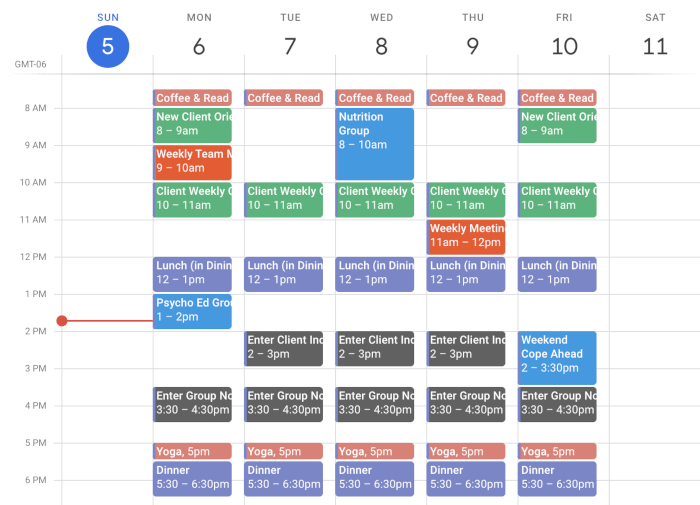In today’s hyper-connected world, productivity isn’t about working more hours—it’s about working on the right things. While most professionals drown in endless to-do lists and back-to-back meetings, a revolutionary approach called the Pareto time audit is helping thousands of people double their results while working fewer hours. This counterintuitive method leverages the famous 80/20 rule, suggesting that roughly 20% of your activities generate 80% of your meaningful outcomes. By systematically analyzing how you spend your time and ruthlessly focusing on high-impact activities, you can eliminate productivity killers and achieve extraordinary results. Whether you’re an entrepreneur juggling multiple projects, a manager overwhelmed by competing priorities, or simply someone who feels constantly busy yet unproductive, understanding and implementing a Pareto-based time audit could be the game-changer you’ve been searching for.
What is a Pareto Time Audit and Why It Changes Everything
A Pareto time audit is a systematic evaluation of your daily activities through the lens of the 80/20 principle, also known as the Pareto Principle. Named after Italian economist Vilfredo Pareto, this approach recognizes that most results come from a small fraction of causes. When applied to time management, it means identifying which 20% of your activities generate 80% of your valuable outcomes—whether that’s revenue, personal satisfaction, career advancement, or goal achievement.
Unlike traditional time tracking methods that simply record what you do, a Pareto time audit focuses on the impact of your activities. Research from the Harvard Business Review indicates that knowledge workers spend only 39% of their time on primary job duties, with the remainder consumed by meetings, emails, and administrative tasks. This data underscores why a strategic audit becomes crucial for reclaiming productive time.
The transformative power lies in its simplicity: once you identify your high-impact 20%, you can systematically eliminate, delegate, or minimize the remaining 80% that contributes little value. This isn’t about perfecting time management techniques—it’s about fundamentally restructuring how you approach work and life priorities. Companies implementing Pareto-based productivity systems report average efficiency gains of 40-60% within the first quarter, according to productivity consulting firms.
What makes this approach revolutionary is its focus on subtraction rather than addition. Instead of trying to optimize every minute of your day, you strategically remove low-value activities, creating space for what truly matters. This shift from “doing more” to “doing better” represents a fundamental mindset change that can transform both professional performance and personal fulfillment.
The 80/20 Rule Applied to Your Daily Schedule
When examining your daily schedule through the Pareto lens, patterns emerge that most people never notice. Your calendar likely contains a mix of meetings, deep work sessions, administrative tasks, and reactive activities. However, applying the 80/20 rule reveals that only a fraction of these activities drive meaningful progress toward your goals.
Consider a typical knowledge worker’s day: they might attend four meetings, respond to dozens of emails, complete several administrative tasks, and spend time on one major project. The Pareto principle suggests that perhaps only the project work and one strategic meeting generate significant value, while the remaining activities consume time without proportional returns. Studies from the McKinsey Global Institute show that executives spend 23% of their waking hours in meetings, yet research indicates that 67% of participants consider most meetings unproductive.
The key insight is recognizing that not all hours are created equal. An hour spent on strategic planning might generate exponentially more value than an hour spent reorganizing files or attending status update meetings. High-impact activities typically share common characteristics: they align with your primary objectives, require your unique skills or expertise, have long-term consequences, and cannot be easily delegated or automated.
Low-impact activities, comprising the “80%” in your schedule, often masquerade as productive work. These might include excessive email checking, redundant status meetings, perfectionist tendencies on minor tasks, or busy work that feels important but doesn’t move the needle. The challenge lies not in identifying obviously wasteful activities, but in recognizing seemingly legitimate tasks that provide minimal return on time investment. By understanding these patterns in your own schedule, you create the foundation for dramatic productivity improvements.
How to Conduct Your First Pareto Time Audit in 7 Days
Implementing your first Pareto time audit requires a systematic approach that combines detailed tracking with strategic analysis. The seven-day timeframe provides sufficient data to identify patterns while maintaining momentum and avoiding analysis paralysis.
Days 1-2: Comprehensive Time Tracking
Begin by recording every activity in 30-minute blocks using a digital tool like Toggl or a simple spreadsheet. Capture not just what you do, but the context—were you focused or distracted, was the activity planned or reactive, and did it require your unique skills? Avoid changing your behavior during this phase; the goal is establishing an accurate baseline of your current time allocation.
Days 3-4: Activity Categorization
Organize your tracked activities into categories such as strategic work, meetings, communication, administration, and personal time. For each activity, rate its importance and impact on a scale of 1-10. This subjective scoring helps identify which activities truly matter versus those that simply fill time. Research from the American Psychological Association shows that people significantly overestimate time spent on important tasks, making objective tracking essential.
Days 5-6: Impact Assessment
Analyze which activities directly contributed to your primary goals—whether professional advancement, revenue generation, skill development, or personal fulfillment. Look for activities that create lasting value versus those that simply maintain the status quo. This phase often reveals surprising insights about where your time actually goes compared to where you think it goes.
Day 7: Pareto Analysis
Calculate what percentage of your time was spent on high-impact activities (your 20%) versus low-impact busywork (your 80%). Most people discover they spend 10-30% of their time on truly valuable activities, with the remainder consumed by maintenance tasks, inefficient processes, and reactive work. This analysis forms the foundation for strategic time reallocation.
Identifying Your High-Impact 20% Activities
Recognizing your high-impact 20% requires moving beyond gut feelings to data-driven analysis. These activities share specific characteristics that distinguish them from routine tasks, and understanding these patterns helps you make better time allocation decisions moving forward.
Revenue-generating activities typically top the high-impact list for business professionals. These might include client presentations, strategic planning, product development, or relationship building with key stakeholders. For employees, high-impact activities often involve projects that showcase expertise, contribute to team goals, or develop valuable skills. Research from the Bureau of Labor Statistics indicates that workers in high-productivity roles spend 70% more time on core competency activities compared to their less productive counterparts.
Another category of high-impact activities involves leverage and multiplication. These are tasks where your investment of time creates disproportionate returns—training team members, creating systems and processes, or developing strategic partnerships. Unlike linear activities where more time simply produces more output, leverage activities compound over time. For example, spending two hours creating a template might save ten hours monthly in repetitive work.
Personal development activities also frequently qualify as high-impact, though their returns may be less immediately visible. Learning new skills, building industry relationships, or staying current with trends in your field create long-term competitive advantages. A study by the National Bureau of Economic Research found that professionals who spend 5-10% of their work time on skill development earn 15-25% more over their careers compared to those who don’t prioritize continuous learning.
The key insight is that high-impact activities often feel challenging or require focused attention, while low-impact activities tend to be comfortable and routine. If you find yourself avoiding certain tasks or procrastinating on important projects, these might actually be your highest-leverage opportunities. Understanding this counterintuitive relationship helps you prioritize effectively and resist the temptation to default to easier, less valuable work.
Eliminating or Delegating the 80% Time Wasters
Once you’ve identified your low-impact 80%, the next challenge involves systematically reducing or eliminating these time-consuming activities. This process requires strategic thinking and often involves difficult decisions about what to stop doing, but the payoff in reclaimed time and energy makes the effort worthwhile.
Elimination represents the most powerful strategy when possible. Many activities persist in our schedules simply due to habit or perceived obligation rather than genuine necessity. Weekly status meetings that could be replaced by written updates, excessive email checking throughout the day, or perfectionist tendencies on low-stakes tasks often fall into this category. The key question becomes: “What would happen if I stopped doing this entirely?” Often, the answer is “nothing significant,” revealing opportunities for immediate time recovery.
For activities that cannot be eliminated entirely, delegation offers the next best solution. This applies not only to formal workplace delegation but also to personal tasks that others could handle more efficiently. Virtual assistants, automation tools like Zapier, or outsourcing routine tasks can dramatically reduce your direct time investment. Research from the Harvard Business School shows that executives who master delegation increase their team’s productivity by an average of 33% while reducing their own workload.
When elimination and delegation aren’t viable, consider optimization and batching. Group similar activities together to minimize context switching—dedicate specific time blocks for email, phone calls, or administrative tasks rather than spreading them throughout the day. Studies on cognitive switching penalties indicate that transitioning between different types of tasks can reduce efficiency by 25% due to mental refocusing time.
The process of eliminating time wasters often requires addressing underlying systems and expectations. This might involve having conversations with colleagues about meeting frequency, setting boundaries around availability, or implementing new processes that prevent low-value work from accumulating. Effective time management techniques become crucial during this transition period as you establish new routines and boundaries around your refined activity list.
Real-World Pareto Time Audit Success Stories and Results
The practical impact of implementing a Pareto time audit becomes clear through documented case studies and real-world applications. These examples demonstrate both the methodology in action and the measurable results achievable through systematic time reallocation.
Sarah Chen, a marketing director at a Fortune 500 company, discovered through her audit that she spent 60% of her time in meetings, with only 25% involving strategic decisions requiring her expertise. By declining routine update meetings and converting others to written reports, she reclaimed 15 hours weekly for strategic planning and team development. Within six months, her team’s campaign performance improved by 40%, and she received a promotion to VP level. Her success stemmed from recognizing that her highest-value activities involved strategic thinking and team leadership, not information sharing.
Tech entrepreneur Marcus Rodriguez used a Pareto audit to identify that customer development calls and product refinement generated 80% of his startup’s progress, while administrative tasks and non-essential networking consumed most of his schedule. By hiring a virtual assistant for routine tasks and being more selective about networking events, he increased his high-impact activity time from 20% to 65%. His startup secured Series A funding nine months ahead of projections, directly attributed to increased focus on core business development activities.
Corporate consultant Diana Foster applied the principles to her consulting practice and found that 30% of her clients generated 75% of her revenue and referrals, while demanding only 25% of her time. By raising rates for smaller clients and focusing on larger engagements, she doubled her income while working 20% fewer hours. Her experience illustrates how the Pareto principle applies not just to activities but to client relationships and revenue sources.
A study conducted by productivity research firm RescueTime analyzed 50 knowledge workers before and after implementing Pareto-based time audits. Participants showed an average 45% increase in self-reported productivity and a 32% reduction in work-related stress. Most significantly, 78% maintained their optimized schedules after six months, indicating the sustainable nature of this approach when properly implemented.
Advanced Strategies to Maintain Your 80/20 Time System
Maintaining the benefits of your Pareto time audit requires ongoing vigilance and systematic approaches to prevent schedule creep. Without deliberate maintenance strategies, most people gradually revert to their previous patterns as new commitments and distractions accumulate over time.
Weekly time investment reviews serve as your primary maintenance tool. Every Friday, spend 15 minutes analyzing the upcoming week’s calendar and identifying activities that don’t align with your 80/20 framework. This proactive approach prevents low-value commitments from accumulating and helps you course-correct before patterns become entrenched. Research from behavioral psychology suggests that weekly reviews increase goal achievement rates by 76% compared to those who don’t regularly assess their progress.
Implementing decision-making criteria streamlines your ability to evaluate new opportunities and requests. Develop a simple scoring system based on factors like alignment with core goals, unique skill requirements, and long-term impact potential. When colleagues request meetings or new projects arise, you can quickly assess whether they qualify as 20% activities worth your time investment. This systematic approach reduces decision fatigue and helps you maintain boundaries consistently.
Technology integration plays a crucial role in sustainable time management. Tools like Notion for project management or Calendly for meeting scheduling can automate routine decisions and reduce administrative overhead. However, the key lies in selecting tools that support your 80/20 framework rather than adding complexity. The most effective approach involves choosing 2-3 core tools that integrate well together rather than attempting to optimize every aspect of your workflow.
Understanding deadline psychology becomes particularly important as you maintain your optimized schedule. High-impact activities often lack external deadlines, making them vulnerable to displacement by urgent but less important tasks. Creating artificial deadlines and accountability systems for your 20% activities helps ensure they receive appropriate priority even when competing demands arise.
Regular system updates account for changing priorities and responsibilities. Quarterly reviews of your 80/20 categorization ensure your system evolves with your role and goals. What qualifies as high-impact activity may shift as you advance in your career, take on new responsibilities, or pursue different objectives. This flexibility prevents your time audit system from becoming rigid and outdated.
Common Pareto Time Audit Mistakes That Kill Productivity
Even well-intentioned professionals make predictable mistakes when implementing their first Pareto time audit, often undermining the potential benefits. Understanding these common pitfalls helps you avoid them and maximize your results from the beginning.
The most frequent mistake involves perfectionist tracking—attempting to account for every minute with excessive precision. This approach creates more administrative burden than insight and often leads to abandoning the audit entirely. Research from behavioral economics shows that people who track too granularly experience increased anxiety and decreased compliance with self-monitoring systems. The goal is identifying broad patterns and major time allocations, not creating a perfect record of every moment.
Misidentifying high-impact activities represents another critical error. Many people confuse “busy work that feels important” with genuinely valuable activities. Attending every available meeting, responding to emails immediately, or perfecting minor details might feel productive but rarely qualify as 20% activities. The key distinction lies in asking whether the activity creates lasting value or simply maintains the status quo. Activities that someone else could do equally well rarely belong in your high-impact category.
Another common mistake involves attempting dramatic changes immediately. Suddenly canceling all low-value meetings or eliminating entire categories of work often creates organizational friction and unsustainable schedules. Successful Pareto implementation requires gradual transitions that allow colleagues and systems to adapt. A 10-15% monthly shift in time allocation toward high-impact activities proves more sustainable than attempting a complete schedule overhaul.
Ignoring energy management while optimizing time allocation undermines long-term success. Your highest-impact activities often require peak mental energy and focus, but many people schedule them during low-energy periods or after depleting their cognitive resources on trivial tasks. Aligning your most important 20% activities with your natural energy rhythms multiplies their effectiveness. Studies from chronobiology research indicate that cognitive performance varies by up to 700% throughout the day for most individuals.
Finally, many people fail to account for the relationship and communication aspects of time reallocation. Suddenly becoming unavailable for previous commitments without explanation can damage professional relationships. Successful implementation requires transparent communication about your new priorities and gradual transitions that respect existing obligations while establishing new boundaries for future commitments.
The journey toward implementing a successful Pareto time audit represents more than just a productivity technique—it’s a fundamental shift in how you approach time, energy, and priority management. By systematically identifying and focusing on the 20% of activities that generate 80% of your results, you can achieve the seemingly impossible: better outcomes with less effort and stress.
The evidence from both research and real-world applications consistently demonstrates that this approach delivers measurable improvements in both professional performance and personal satisfaction. However, success requires moving beyond initial enthusiasm to systematic implementation, ongoing maintenance, and the discipline to resist reverting to old patterns when faced with competing demands.
The most profound insight from mastering this approach lies in recognizing that productivity isn’t about doing more things—it’s about doing the right things with focused attention and strategic intent. As you begin implementing your own Pareto time audit, remember that the goal isn’t perfection but consistent improvement in aligning your time investment with your most important objectives.
Start your seven-day audit this week. Track your activities, analyze the patterns, and begin the process of reclaiming your time for what truly matters. The transformation won’t happen overnight, but the compounding benefits of focusing on your high-impact 20% will reshape both your productivity and your professional trajectory in ways that continue paying dividends for years to come.



